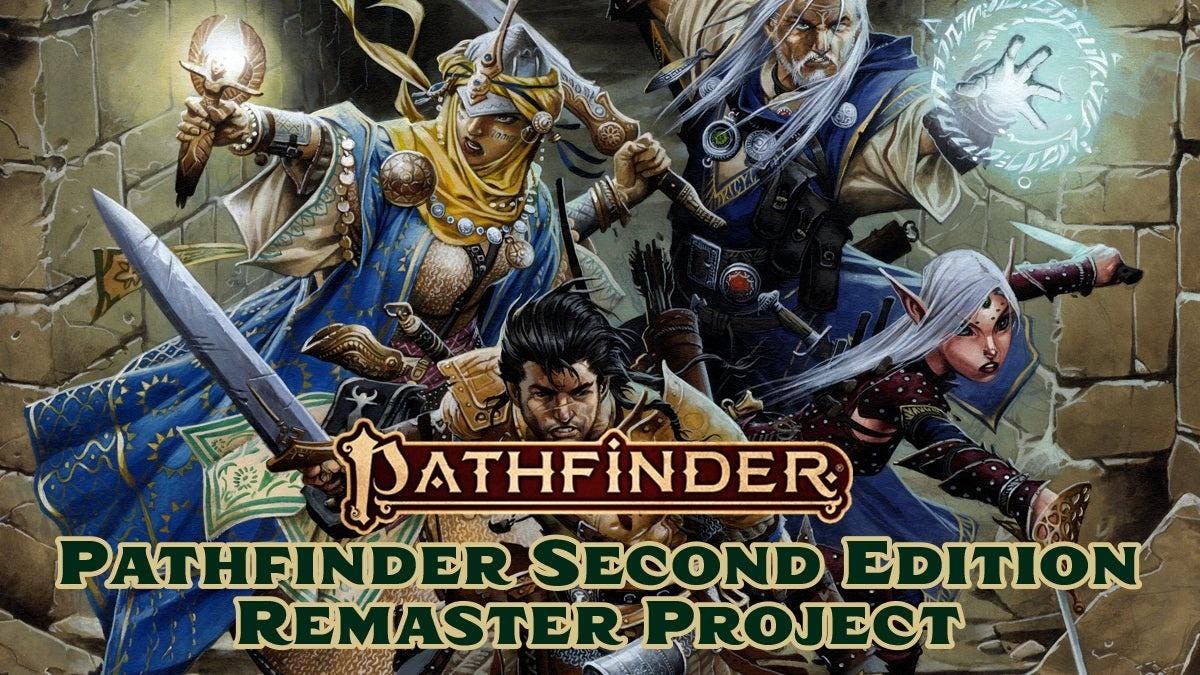“Edition” can be a tricky word in tabletop games. For publishers a new edition offers a chance to incorporate rules fixes, errata and a fresh take on a successful game. For fans, it can mean wrestling with compatibility issues and the feeling of buying something that’s already owned.
Paizo found itself in a unique position this year. They sold through the most recent print run of Pathfinder Second Edition quickly thanks to public outcry over Wizards of the Coast’s handling of the Open Gaming License as it pertains to Dungeons & Dragons. They decided to take the opportunity to update game terminology to reflect the ORC license they helped create as a response, add in the most recent errata and take further steps into becoming its own unique design.
The remastered editions reshuffle the content previously contained in the core book, Advanced Players Guide and Gamemastery Guide. The company sent a copy of the new Player Core and GM Core for review. Overall, I enjoyed the continued evolution of Pathfinder Second Edition into a robust fantasy role playing game that stands alone.
What Is Pathfinder Second Edition?
When Pathfinder Second Edition came out in 2019, the designers took the opportunity to rebuild the game from the ground up. They wanted to keep the elements of the game that worked such as heavy character customization and a balanced tactical system while removing legacy mechanics and streamlining character creation. While Dungeons & Dragons Fifth Edition simplified things and put rulings first, Pathfinder Second Edition strived to install a solid rules base and then let tables use the ones they wanted.
The result was a game system that offered meaningful character decisions at every level. It also provided a tactical game engine that gave players options but avoided the same old strategies. Tables that loved getting into the detals of creating a world will find several options to tell fantasy stories with the tools they want in this game.
Pathfinder Second Edition Player Core
This evolution continues in the Player Core. The ancestries and classes included focus on ones that are the most central to fantasy gaming. But it also includes rules that are very popular with players such as gaining an animal companion that comes along for the ride.
Many of the changes are small, such as new terminology to replace things that were part of the Open Gaming License. “Attacks of opportunity”, for example, are now “reactive strikes”. Attribute scores have been completely eliminated in preference of ability modifiers and the boosts that affect them.
A few larger changes include mixed heritages that have their own names and cultures rather than the half-orcs and half-elves of old portrayed as outcasts. Wizards are no longer divided by the types of magic they practice, instead choosing their focus of study and magical impliment to determine what spells they get. Class feats have also gone through an overhaul with errata and some new ones in the mix.
The book also has a cleaner overall look. This is perhaps most evident in the character sheet included in the back which is far less cramped as its predecessors. There’s still a lot of information that needs to be written down but the designers have finally embraced the idea that it’s okay to do it over multiple pages instead of trying to keep things on one piece of paper.
Pathfinder Second Edition GM Core
That relaxed fit mentality continues in the GM Core. Often, books like these are where designers put the rules that they can’t make fit into the core book. While there are plenty of rules in this book there’s also a lot of great advice for Game Masters of any skill level.
The first part of the book focuses on good practices for running a game and handling the logistics that come with the territory. I’m glad to see discussion of player consent and gamr content enter into the larger games in the hobby, not to mention how to deal with problem players and issues at the table. These are all important skills for Game Masters t learn in addition on how to run the game and tell good stories.
I also really like the subsystems introduced in the second half of this book. Not every game needs a step by step rules system for influencing a noble lord or researching a magical mystery, but Pathfinder shows some solid ways to handle these non combat siutations using skills and other abilities. They show new Game Masters good ways to run these encounters and give veteran Game Masters dependable mechanics to fall back on if they don’t want to run a scene off the cuff.
Much of this material came from the Gamemastery Guide but I think moving it to a core GM book improves the experience. Being in a core book gets it into the hands of more people rather and makes it more likely to enter into play. The original corebook felt packed to the gills and these books feel more informative because they have the room to be.
Pathfinder Second Edition Remaster Impressions
The remastered core books offer a great opportunity for new players to check out a solidly constructed fantasy RPG. Fans who want to be totally updated should consider getting copies too, though they can get by the upcoming pocket editions or checking in to the Archive of Nethys to see what’s changed. Everything outside the core books will be staying the same for some time.
The remastered editions of these books are available this week in digital and physical formats. Pocket editions of these books will be available early next year for fans who want the new rules in a smaller, moe inexpensive print format. The remaster project also continues next year with Player Core 2 and Monster Core.
Read the full article here





